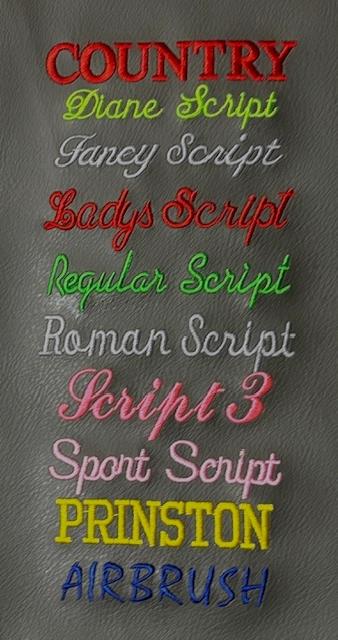The Art of Custom-made Needlework: Opening the Tricks to Creating Special and Remarkable Layouts
The secrets to developing custom-made embroidery designs that astound the eye and leave an enduring perception lie in a fragile equilibrium of technique, creative thinking, and interest to detail. As we dig into the globe of customized embroidery, we reveal the nuanced interplay in between thread option, stitch intricacy, and style personalization that raises a mere garment to a job of art.
Selecting the Right Needlework Threads
When picking embroidery strings, what key elements should you take into consideration to make sure the best results for your custom designs? The option of needlework thread is vital in establishing the final outcome of your embroidered design. Among the primary considerations is the material of the thread. Different materials such as cotton, polyester, rayon, and silk provide differing degrees of shine, durability, and texture. It is vital to pick a thread product that complements the fabric you are embroidering on and aligns with the desired look of the design.
Thicker threads can include dimension and appearance to your style, while finer strings are optimal for intricate information and small message. Additionally, taking into consideration the color fastness and washability of the string is important to ensure that your custom-made designs preserve their quality and vibrancy over time.
Checking Out Various Stitch Methods
To look into the world of 'Discovering Different Stitch Strategies', one should realize the complexities and subtleties that each stitching technique offers the art of embroidery. Different stitch strategies not only add visual interest however additionally contribute to the general appearance and measurement of the design. One prominent stitch strategy is the satin stitch, which involves carefully stuffed parallel stitches to develop a smooth and shiny surface area, ideal for completing forms and developing bold describes.
On the various other hand, the backstitch is a functional strategy frequently utilized for detailing and including great information. It involves stitching backward to produce a solid line of embroidery. Furthermore, the French knot stitch includes a responsive component to layouts, perfect for creating textured accents like blossom centers or decorative touches.
Exploring different stitch methods enables embroiderers to play with light, shadow, and depth within their designs, elevating the visual appeal and artistic quality of their needlework jobs. By grasping different stitching methods, one can unlock endless possibilities for developing unique and remarkable personalized needlework pieces.
Incorporating Personalized Style Aspects
Having discovered the ins see this site and outs of different stitch strategies such as the satin stitch, backstitch, and French knot, the focus currently moves towards integrating customized layout aspects in custom needlework projects. Individualized design components play an important duty in making embroidery tasks really one-of-a-kind and unforgettable.
An additional method to integrate tailored style components is by including signs or concepts that hold special definition to the recipient or check over here reflect their rate of interests and individuality. As an example, incorporating a favorite blossom, pet, or hobby-related symbol can make the needlework layout much more significant and personalized. Additionally, choosing colors that reverberate with the recipient or straighten with the intended theme can additionally boost the customization of the embroidery project.
Grasping the Art of Color Sychronisation

One trick aspect of color sychronisation is recognizing shade theory. This consists of recognizing how different shades interact with each other, the emotions they share, and how they can be integrated to produce aesthetically appealing designs. By using color theory principles, embroiderers can produce unified shade palettes that improve the general appearance of the layout.
Additionally, focusing on contrast is vital in shade sychronisation. Making use of contrasting shades can help certain aspects of the style pop, enhance legibility, and create like this a visually dynamic embroidery piece. By grasping the art of color sychronisation, embroiderers can elevate their styles and produce unforgettable items that resonate with clients and customers alike.
Enhancing Structure With Advanced Needlework Stitches
Bullion knots, on the various other hand, can be utilized to produce twisted, ropelike aspects that add an elegant feeling to the needlework. Exploring with these advanced needlework stitches enables you to push the boundaries of typical needlework and create absolutely special and visually enticing structures in your designs.
Verdict
Finally, the art of customized embroidery includes a combination of picking the ideal threads, discovering various stitch strategies, integrating individualized design aspects, grasping shade sychronisation, and enhancing structure with advanced stitches. By recognizing and executing these crucial elements, embroiderers can develop distinct and remarkable styles that display their creativity and ability. Embroidery enthusiasts can open the secrets to producing beautiful and bespoke items that stand apart and leave an enduring impression.